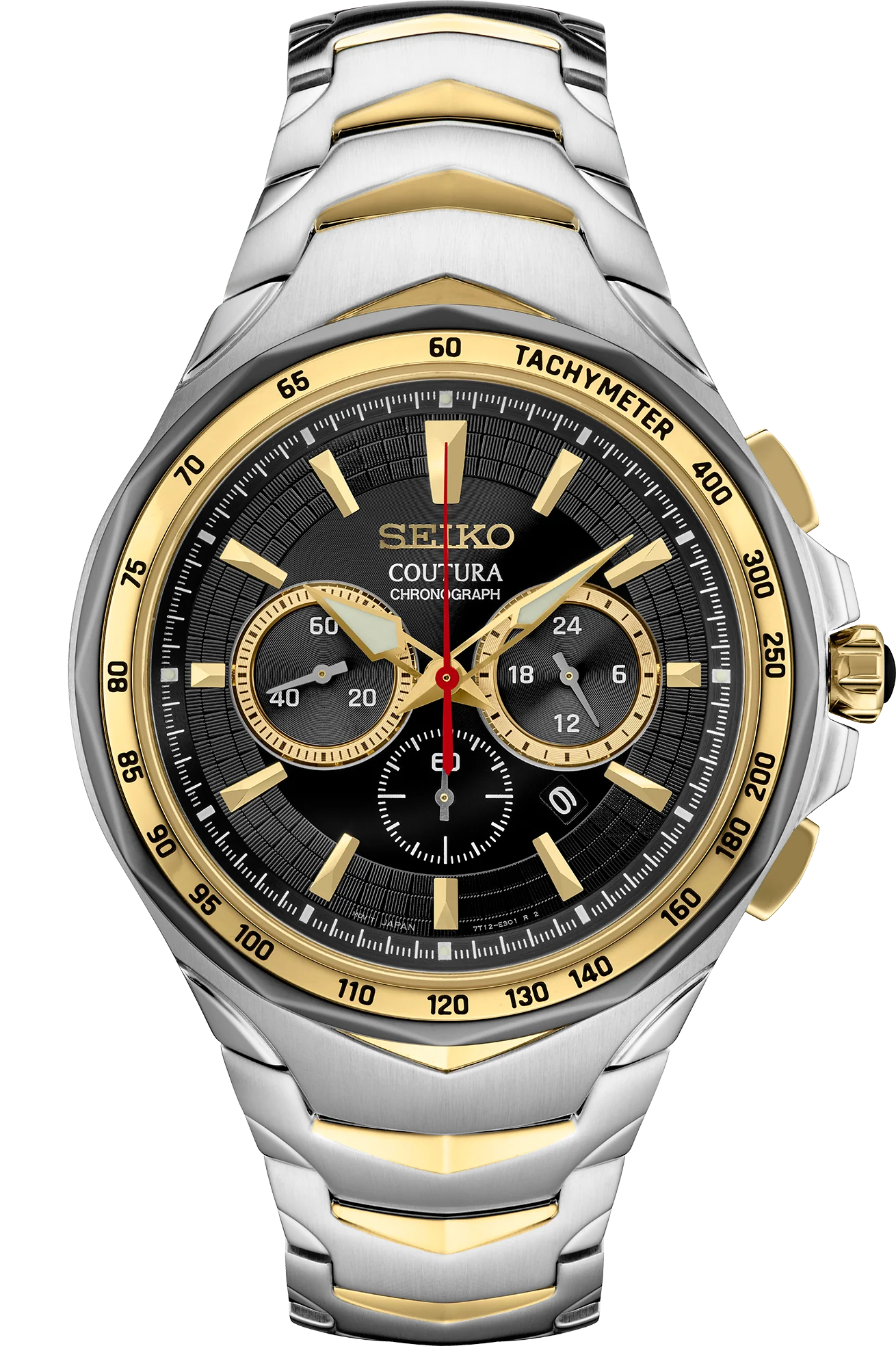
Seiko is one of the most revered names in watchmaking, known for its innovation, precision, and craftsmanship. From humble beginnings in 1881 as a small watch shop in Tokyo, Seiko has evolved into a global leader in horology. What sets Seiko apart from many other watch brands is its commitment to manufacturing nearly every component in-house, from the movements to the cases and dials. This dedication to creating watches with exceptional quality and precision has made Seiko a favorite among collectors and enthusiasts.
In this article, we’ll take a closer look at how Seiko watches are made, highlighting the intricate processes, technology, and artistry involved in crafting these remarkable timepieces.
The Heart of the Watch: Movement Assembly
The movement is the core of any watch, and Seiko is renowned Seiko Watches for its in-house movements, which are crafted with extraordinary precision and skill. A Seiko watch’s movement is the product of decades of innovation and expertise, with a focus on both mechanical and quartz movements. Seiko offers a wide range of movements, from the iconic Spring Drive to the renowned automatic mechanical movements and quartz movements.
Mechanical Movements: The Art of Tradition
Seiko’s mechanical movements are the epitome of craftsmanship. These movements require the utmost attention to detail and precision, as they contain hundreds of tiny components that must work seamlessly together. The 9S mechanical calibers found in Grand Seiko watches, for example, are assembled by hand by highly skilled watchmakers, who spend days or even weeks ensuring each part is correctly positioned and aligned.
One of the most remarkable aspects of Seiko’s mechanical movements is their in-house manufacturing. Seiko produces every single component, from the balance wheel to the escapement, at its own state-of-the-art facilities. This vertical integration allows Seiko to maintain tight control over the quality of each part, ensuring that the finished product is reliable and accurate.
Spring Drive: A Seamless Fusion of Mechanical and Quartz Movements
Seiko’s Spring Drive movement is one of the most revolutionary innovations in watchmaking. The Spring Drive combines the best of mechanical and quartz technology, utilizing a traditional mechanical movement’s mainspring but replacing the escapement with a quartz oscillator for greater precision.
In a Spring Drive watch, the mainspring provides the energy, but instead of using a traditional escapement to regulate the time, Seiko employs a quartz oscillator that controls the flow of energy, resulting in an incredibly smooth gliding second hand and a high level of accuracy—up to one second per day.
Quartz Movements: Precision and Reliability
Quartz watches, known for their incredible accuracy and reliability, are a staple of Seiko’s offerings. Seiko is one of the pioneers of quartz technology, famously introducing the world’s first quartz watch in 1969 with the Seiko Astron. Seiko’s quartz movements are powered by a battery and regulated by a quartz crystal, making them much more precise than mechanical watches.
Seiko continues to refine its quartz movements, offering a variety of options from standard quartz to kinetic (self-charging quartz) and solar-powered models. The Kinetic movement, in particular, has gained a loyal following due to its ability to generate power from the movement of the wearer’s wrist, eliminating the need for a battery change.
Dial Creation: Crafting the Face of the Watch
The dial is arguably the most visible and aesthetically Seiko Coutura important part of a watch, and Seiko takes great care in crafting dials that are not only functional but also visually stunning. Seiko’s dial-making process is a highly intricate art, often involving hand-finishing techniques that require incredible precision and skill.
Sunburst Dials and Texture Finishing
One of the signature features of many Seiko watches, particularly in the Grand Seiko collection, is the sunburst dial. The sunburst effect is achieved by carefully polishing the surface of the dial to create a dynamic, radiant finish that reflects light in different directions, giving the dial depth and character. The technique requires a combination of polishing, brushing, and refining, often done by hand.
Seiko also creates textured dials that resemble natural patterns, such as the Shirakaba dial in the Grand Seiko Snowflake collection, which mimics the texture of snow-covered landscapes in Japan. These dials are typically hand-finished, with watchmakers using traditional tools to achieve the perfect pattern.
Applying the Markers and Hands
Once the dial has been finished, it’s time to apply the hour markers, minute markers, and hands. This process is delicate, as the markers and hands must be precisely aligned and affixed. Many Seiko watches feature applied markers, where the markers are crafted from metal or other materials and affixed to the dial using special adhesives. The hour and minute hands are then installed with exact precision, ensuring that they move smoothly and align perfectly with the markers.
The luminescent paint is also applied to the markers and hands, ensuring that the watch remains legible in low-light conditions. Seiko uses Lumibrite, a proprietary luminescent material, to ensure long-lasting brightness.
Case Construction: Strength and Elegance
The case of a Seiko watch is a true testament to the brand’s commitment to durability and aesthetics. Seiko’s watch cases are often made from stainless steel, titanium, or even platinum, and they undergo several finishing stages to achieve the desired level of polish and texture.
Zaratsu Polishing: A Signature Technique
One of Seiko’s most famous techniques is Zaratsu polishing, which is used primarily in the Grand Seiko collection. This polishing method is performed by hand and creates a flawless, distortion-free mirror finish. The process requires a highly skilled artisan, who uses a rotating disk to polish the case and its surfaces to perfection. The result is a stunningly smooth, reflective surface that’s free from any imperfections.
Case Assembly and Waterproofing
Once the case is finished, it is carefully assembled. Seiko pays close attention to ensuring that each case is airtight, especially for models with high water resistance, like the Prospex collection. O-rings, gaskets, and other sealing elements are applied to the case to prevent moisture from entering, ensuring that the watch remains durable and functional even in challenging conditions.
Final Assembly and Testing
After the movement, dial, and case have been Seiko 5 Sports completed, the watch undergoes final assembly. This includes installing the movement into the case, securing the case back, and attaching the bracelet or strap. At this stage, the watch is meticulously tested for functionality and accuracy.
Precision Testing
Before being released to customers, Seiko watches undergo rigorous testing to ensure they meet the brand’s strict standards of precision and reliability. Mechanical watches are tested for accuracy, and quartz watches are checked for battery life and timekeeping. Grand Seiko watches, especially those with the Spring Drive movement, undergo even more rigorous testing, including power reserve testing and timekeeping accuracy tests.
Water Resistance Testing
For Seiko watches designed for sports and diving, the watches undergo water resistance testing to ensure that they can withstand different depths of immersion. Seiko’s Prospex and Tuna series, for example, are renowned for their ability to withstand extreme underwater conditions, and each watch is carefully tested to meet the required specifications.
Conclusion
Seiko’s commitment to in-house production, precision, and craftsmanship is evident at every stage of the watchmaking process. From the design and assembly of movements to the meticulous creation of dials and cases, Seiko watches are a testament to the brand’s dedication to quality and innovation. Whether it’s a Spring Drive masterpiece or a mechanical marvel, each Seiko watch is the product of decades of expertise, cutting-edge technology, and artistic vision.
For those who appreciate the art of horology, understanding how Seiko watches are made provides a deeper appreciation for the craftsmanship and dedication that goes into each timepiece. Seiko’s blend of traditional craftsmanship and modern technology ensures that its watches continue to be among the finest in the world.





